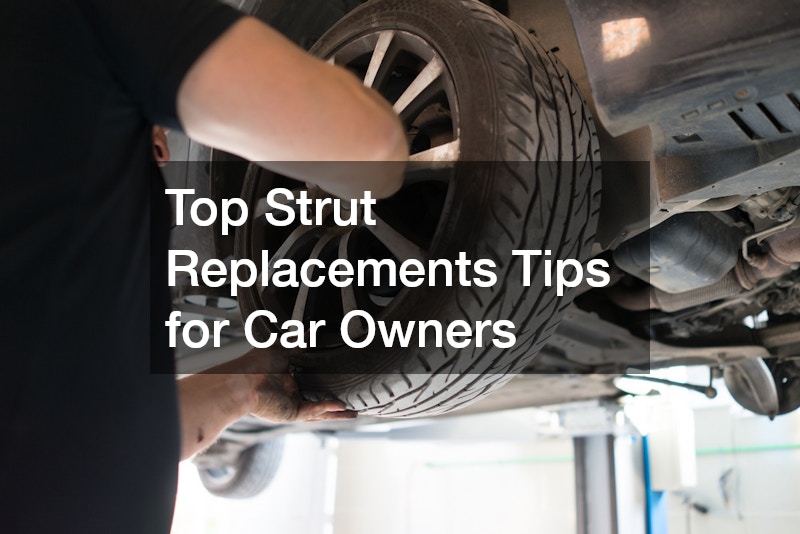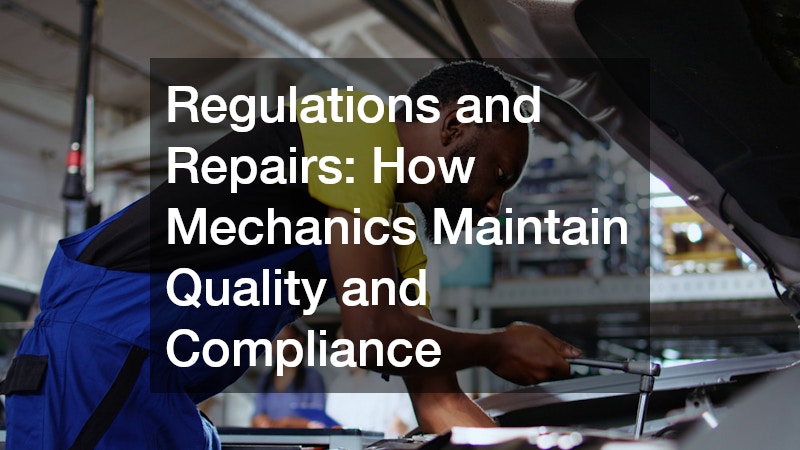This guide explores common signs that indicate your vehicle may need professional attention. You’ll learn why it’s risky to ignore blinking dashboard icons, how to detect brake wear before it compromises your stopping power, and the importance of addressing alignment or body damage early on. By the end, you’ll have a better sense of when to schedule service at a local car repair shop, how to budget for upcoming repairs, and what areas deserve the most vigilance. Staying informed can help you navigate potential problems with confidence and preserve the longevity of your investment.
Dashboard Warnings That Demand Attention
Modern vehicles come equipped with an array of dashboard warning lights designed to alert you to potential malfunctions. A check engine light can be triggered by something as minor as a loose gas cap, but it can also point to serious engine trouble. Common icons include those for oil pressure, battery charging, anti-lock brake systems, and tire pressure monitoring. If any warning light blinks or remains lit for more than a short moment after starting your engine, you should take it seriously.
It’s easy to shrug off a single warning light if the car seems to operate normally. However, the underlying problem may worsen over time, leading to more complex and expensive repairs. For instance, ignoring a flickering oil pressure light could result in engine overheating or even a seized engine block. Similarly, a persistent check engine light might indicate faulty sensors or emissions issues, which can trigger poor fuel economy or performance losses. Whenever a light comes on, consult your vehicle’s manual or use a diagnostic scanner for a preliminary check. If the issue isn’t clear, scheduling an appointment for local auto repairs is a prudent move.
Keep in mind that multiple warning lights appearing at once could indicate an electrical or sensor-related malfunction rather than multiple isolated issues. Even if you suspect a simple glitch, it’s wise to have a trusted mechanic investigate. Early detection often means a relatively quick fix, whereas delaying service can lead to spiraling repair costs. Many drivers underestimate the complexity of modern automotive electrical systems, so professional diagnostics are invaluable for pinpointing the exact source of a malfunction.
Strange Sounds and When to Investigate

Every vehicle produces some level of noise. Still, it’s important to distinguish harmless engine hums from concerning clanks, squeals, or grinding noises. High-pitched squealing under the hood might signal a worn-out or loose serpentine belt, while rattling sounds near the wheels could suggest issues with wheel bearings or suspension components. Being attuned to unusual sounds is one of the best ways to catch mechanical problems early.
Grinding or scraping noises when hitting the brakes should prompt an immediate inspection. This could indicate brake pads that are fully worn and now grinding against the rotors, a situation that necessitates urgent attention. Procrastinating on brake maintenance can lead to more expensive parts replacements and even critical failure, which is particularly dangerous in emergency stops. For many drivers, squeaking brakes might be brushed off as a minor annoyance, but it can be your first clue that auto brake services are necessary.
Take note of how and when the noises occur. A knocking sound that happens only during turns, for example, may be tied to the power steering system or CV joints. Even a humming or buzzing noise from the dashboard vents can suggest a failing component in the air circulation system, which might later require an auto air conditioning service if connected to the A/C unit. Observing these contextual clues helps your mechanic diagnose the root cause more efficiently when you bring your vehicle in for an inspection.
Vibrations and Handling Problems
Excessive vibrations while driving can hint at a range of concerns. A shaky steering wheel at highway speeds might be tied to unbalanced wheels, especially if the shaking intensifies as you go faster. Damaged suspension parts or misaligned tires can also cause your vehicle to vibrate, making it more difficult to handle safely. Overlooking these cues can compromise your control on the road.
If vibrations appear when you apply the brakes, warped brake rotors are often to blame. This issue surfaces most frequently after intense or prolonged braking that causes uneven rotor wear. When left unresolved, warped rotors can diminish stopping power, shorten the lifespan of brake pads, and increase the likelihood of brake-related emergencies. Prioritizing auto brake services can keep this from escalating.
Unsteady handling can be another red flag. If your vehicle drifts to one side or requires constant steering corrections, alignment might be the problem. Getting tire rotations on a routine schedule also helps maintain even wear, reducing the chance of developing alignment issues prematurely. Whether you drive a compact car or a pickup truck, balanced tire wear is essential for proper grip, stability, and overall driving safety.
Leaks and Odd Smells
Fluid leaks can be a telling sign of mechanical troubles. Engine oil, coolant, transmission fluid, brake fluid, and power steering fluid each play distinct roles in keeping your vehicle running smoothly. Dark brown or black drips often point to engine oil leaks, while bright orange or green liquid could signal a coolant leak. Transmission fluid tends to have a red or pink tint, whereas brake fluid appears clear to light brown. If you notice any of these beneath your car, prompt investigation can prevent serious damage.
Strange odors serve as another valuable warning. A sweet smell might mean leaking antifreeze, which can cause the engine to overheat if levels become too low. A burnt scent could suggest slipping belts or a transmission malfunction. Even a musty odor in your cabin might indicate water seeping in around a damaged seal, which can accelerate corrosion. In some instances, water infiltration might also arise from a cracked windshield, in which case windshield repair becomes necessary to keep moisture out.
Ignoring leaks can prove disastrous. Low engine oil increases friction and the risk of overheating, while inadequate coolant can lead to catastrophic engine failures. Similarly, a drop in brake fluid jeopardizes your ability to stop reliably. Each fluid has a specific function that keeps your vehicle functioning at peak performance. Monitoring these levels and checking for leaks during routine inspections or oil changes helps you stay ahead of potential breakdowns.
Brake Responsiveness and Safety Concerns
Safe braking is non-negotiable. If you find yourself pressing the brake pedal harder than usual, hearing squeals or grinding noises, or noticing a burning smell, it’s time to investigate. Another telling symptom is a vibrating brake pedal, which can happen when rotors warp or when brake pads are worn unevenly. Any one of these signs can escalate into complete brake failure if left unaddressed, endangering you and others on the road.
A spongy or soft brake pedal that travels to the floor indicates potential fluid leaks or air in the brake lines. If the vehicle pulls to one side when braking, you might have a stuck caliper, uneven brake pads, or alignment problems. These issues don’t just compromise safety; they also increase wear on other mechanical parts, raising the cost of repairs.
Taking your car to a local car repair shop with a strong reputation can be your first step toward resolution. A qualified mechanic will inspect pads, rotors, calipers, and brake fluid for signs of abnormal wear or contamination. Timely auto brake services help ensure you maintain consistent stopping power. The consequences of postponing brake maintenance can be severe, so any unusual brake-related symptoms should prompt immediate professional attention.
Fuel Economy Drops and Reduced Performance
A sudden decrease in fuel efficiency often signals that your engine or other components aren’t working optimally. While slight fluctuations are normal, especially if you’ve been driving in harsh weather or traffic, a notable decline is worth investigating. Common culprits can include clogged fuel injectors, a malfunctioning oxygen sensor, or a dirty air filter. Each of these issues forces the engine to work harder, consuming more fuel.
Low tire pressure or worn tires can also lower mileage by increasing rolling resistance. Keeping up with tire rotations and proper inflation helps maintain consistent contact with the road and aids in fuel efficiency. If you own a truck, it’s especially important to pay attention to any dip in gas mileage, as bigger vehicles tend to amplify the impact of mechanical inefficiencies.
Performance can also wane if your engine struggles to accelerate or frequently stalls. Faulty spark plugs, worn-out ignition coils, or fuel system clogs can cause sluggishness and rough idling. Even an aging catalytic converter can reduce horsepower and mileage. When you notice decreased performance, a thorough diagnostic at local auto repairs is your best bet. Mechanics often run computerized scans to identify malfunctioning components, which can then be repaired or replaced to restore your vehicle’s power and efficiency.
Overheating and Climate Control Woes
Overheating can strike suddenly, especially during hot weather or in prolonged stop-and-go traffic. It may stem from a faulty radiator, coolant leak, clogged hoses, or a malfunctioning thermostat. The temperature gauge on your dashboard will typically provide the first clue, inching into the red zone if your cooling system isn’t operating correctly. Consistent overheating is a major concern, as it can warp the engine head or even crack the engine block.
When you notice the temperature gauge rising above the normal range, pull over safely and turn off the engine. Allow it to cool before checking coolant levels. If the problem persists, a professional assessment is critical. A mechanic can test for leaks, perform a pressure check on the cooling system, and ensure the radiator fan works properly. Neglecting this issue can lead to severe damage that costs thousands of dollars to repair.
On the other side of the temperature spectrum, a faulty air conditioning system can make summer driving a miserable experience. If you find that your A/C is blowing warm air or taking too long to cool, an auto air conditioning service may be in order. Refrigerant leaks, a failing compressor, or a clogged condenser can all degrade your vehicle’s climate control. While uncomfortable cabin temperatures aren’t typically as dire as overheating, a compromised system can place additional strain on the engine, affecting overall performance and mileage.
Alignment Issues and Tire Trouble
A car that drifts to one side of the road, even when the steering wheel is centered, usually suffers from alignment problems. Misalignment can result from normal wear and tear, potholes, curb bumps, or collisions. If your steering wheel sits at an angle even though you’re driving straight, that’s another sign that the wheels aren’t aligned correctly. Besides affecting handling, misalignment increases tire wear, forcing you to replace tires prematurely.
Proper alignment is essential for optimized traction and maneuverability. It helps tires wear evenly, preventing bald spots that can jeopardize your safety at high speeds or in poor weather conditions. During alignment checks, mechanics also inspect key suspension components like ball joints and tie rods. If these parts are worn or damaged, they’ll need replacement to keep your vehicle steering and tracking accurately.
Ignoring alignment problems can lead to uneven tread wear, forcing you to purchase new or used tires more frequently. Worn tires also have less grip, increasing braking distance and the likelihood of hydroplaning on wet roads. Regular inspections and tire rotations mitigate these risks by promoting uniform wear. If you frequently drive on rough roads, consider scheduling alignment checks more often than the standard recommendation to avoid hidden damage that deteriorates over time.
Body Damage and Structural Concerns
Body damage may seem cosmetic, but it can lead to bigger problems. Dents and scrapes expose metal to moisture, leading to corrosion and rust that can weaken structural components over time. If you drive a commercial truck or a heavy-duty vehicle, these issues can escalate faster given the daily strain your vehicle faces. Truck body repair goes beyond improving aesthetics; it ensures the safety and integrity of the vehicle, especially when hauling cargo.
Even minor collisions can misalign the chassis. Bent frames or panels might change a vehicle’s aerodynamics, affecting both fuel economy and overall handling. If your car has been in an accident—whether a fender-bender or a more serious crash—an auto body service can assess the damage more thoroughly than a simple glance can reveal. Skilled technicians often use advanced diagnostic tools to determine whether a vehicle’s structural integrity has been compromised.
Windshield damage is another area that warrants timely attention. A small chip can rapidly become a large crack due to temperature changes or road vibrations. This not only obstructs your view but can also weaken the glass’s structural role in supporting the roof. Timely windshield repair keeps the damage from expanding and can often be less expensive than a full replacement. It’s an easy step that helps maintain both visibility and the vehicle’s overall safety standards.
Finding a Trustworthy Repair Shop

When your vehicle starts showing signs of distress, choosing the right professional for repairs is as crucial as recognizing the symptoms themselves. A well-reviewed local car repair shop can save you time, money, and frustration by offering expert diagnostics, transparent pricing, and efficient service. While some drivers might rely on quick fixes or discount garages, these can sometimes result in subpar work that leads to further issues down the road.
Local shops often have deeper connections to the community, meaning they rely on positive word-of-mouth to stay in business. They are more likely to offer personalized service and honest assessments. If you’re managing a fleet of vehicles or drive a large truck for business, finding a shop that specializes in bigger vehicles—or even a dedicated semi truck mechanic—could be invaluable. These technicians have the specialized tools and expertise required to handle large engines, heavy-duty transmissions, and more complex braking systems.
It also helps to ask for detailed estimates before committing to any repair. A reputable mechanic will provide a breakdown of parts and labor, along with an explanation of why certain services are needed. Whether the issue involves truck body repair, brake work, or a radiator overhaul, having clear insight into costs and the scope of work builds trust. Frequent communication and updates along the way help ensure you’re not blindsided by unexpected bills.
Proactive Maintenance and Preventive Measures
A strong preventive maintenance routine can ward off many of the warning signs discussed so far. Regular oil changes, fluid checks, and inspections keep your vehicle operating at peak performance. While each manufacturer has its own recommendations, oil is generally changed every few thousand miles or according to a time interval. The same goes for other key components like filters, belts, and spark plugs, which degrade over time and usage.
Tire rotations also play an integral role in extending tire life. Rotating them according to a set schedule helps distribute wear evenly, enhancing handling and stability. Checking tread depth regularly prevents issues like hydroplaning, which can occur when tread is too shallow to channel water away effectively. Complementing these rotations with proper inflation ensures optimal fuel efficiency and reduces unnecessary strain on your suspension.
Brakes and air conditioning systems are also crucial to monitor regularly. Staying current on auto brake services helps you avoid sudden, alarming failures, while servicing your cooling and air conditioning systems ensures comfortable cabin temperatures without overburdening the engine. Proactively identifying worn hoses or leaking refrigerant saves you from bigger, costlier repairs in the future. If you suspect a looming mechanical or electrical problem, a trusted mechanic can perform diagnostics or a quick test drive to confirm any issues.
Special Considerations for Larger Vehicles
Operating a truck or commercial fleet adds extra layers of responsibility. Larger vehicles are subject to more stress, heavier loads, and longer hours on the road, which can accelerate wear and tear. An attentive approach is necessary, from checking tire pressures daily to listening for abnormal vibrations when carrying cargo. If you have employees driving these vehicles, ensure they understand the basics of inspection and can report minor concerns early, before they become significant problems.
A semi truck mechanic can be an excellent ally if you own or manage a fleet of larger rigs. These professionals specialize in diagnosing and fixing the unique systems found in 18-wheelers or similarly sized vehicles. Whether it’s a specialized brake setup or a heavy-duty diesel engine, having a go-to mechanic for commercial trucks reduces downtime and mitigates costly breakdowns. Some shops even offer mobile or roadside services, which can be invaluable if you’re operating across wide geographic areas.
Structural issues like damaged frames or misaligned axles can have a profound impact on large vehicles. This is where truck body repair becomes not just a convenience but a necessity. Larger vehicles are also more prone to experiencing stress fractures in frames or body panels, particularly when they regularly haul heavy loads or drive on poorly maintained roads. Addressing these problems quickly upholds safety standards and reduces the risk of more extensive repairs later.
Why Timely Repairs Matter

Vehicles are complex, with multiple systems working together to provide safe and efficient transportation. A single overlooked issue can trigger a chain reaction of mechanical failures. A neglected oil leak, for instance, could lead to engine overheating, damaging gaskets, cylinders, and other components. Over time, these small problems turn into massive headaches that could have been avoided with earlier intervention.
Postponing repairs doesn’t just hit your wallet; it also raises the likelihood of a breakdown in inconvenient or dangerous situations—such as a busy highway or remote area. Extended repair delays can endanger you, your passengers, and nearby motorists, especially if the issue involves brakes, steering, or suspension systems. Regular inspections and prompt attention to warning signs can break this cycle of escalating damage.
There’s also a long-term financial angle to consider. A vehicle that’s been well-maintained tends to hold a better resale value than one ridden with mechanical troubles. Whether you plan to keep your vehicle for its entire lifespan or trade it in eventually, preserving its condition makes financial sense. Potential buyers or dealerships often request service records, so evidence of timely upkeep can help secure a favorable trade-in price or private sale.
Final Thoughts on Vehicle Maintenance
Staying alert to your vehicle’s early warning signs can save you substantial hassle and expense. Whether it’s a persistent squeak when braking, an unexplained drop in fuel mileage, or a strange dashboard icon, the message is the same: something needs attention. A quick visit to a local auto repairs shop often proves far cheaper and safer than ignoring a problem until it reaches a critical stage.
Even seemingly cosmetic issues like minor body damage or a cracked windshield can turn into more significant complications if left unattended. An auto body service can restore both the vehicle’s appearance and its structural integrity, helping you avoid hidden corrosion or compromised aerodynamics. Meanwhile, tasks like routine tire rotations, careful monitoring of fluid levels, and timely alignment checks all contribute to a smoother, more reliable driving experience.
For those who rely on larger vehicles for work or run a small fleet, collaboration with a specialized semi truck mechanic is essential. These mechanics understand the heavier loads, specialized parts, and demanding usage that come with commercial trucking. Every day your truck is off the road for avoidable repairs can affect your bottom line, so early intervention and ongoing maintenance pay off significantly.
Approaching vehicle ownership with vigilance and a preventative mindset will extend the life of your car or truck while safeguarding you and other road users. The moment you suspect a mechanical, electrical, or structural issue, seek professional advice. Whether you need help with auto brake services, a routine tune-up, or repairs for damage sustained in an accident, there’s a reliable local car repair shop ready to support you. By recognizing and addressing key signs your vehicle needs repairs, you’ll cultivate a safer, more comfortable ride for years to come.





